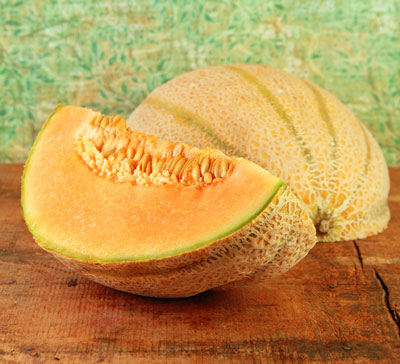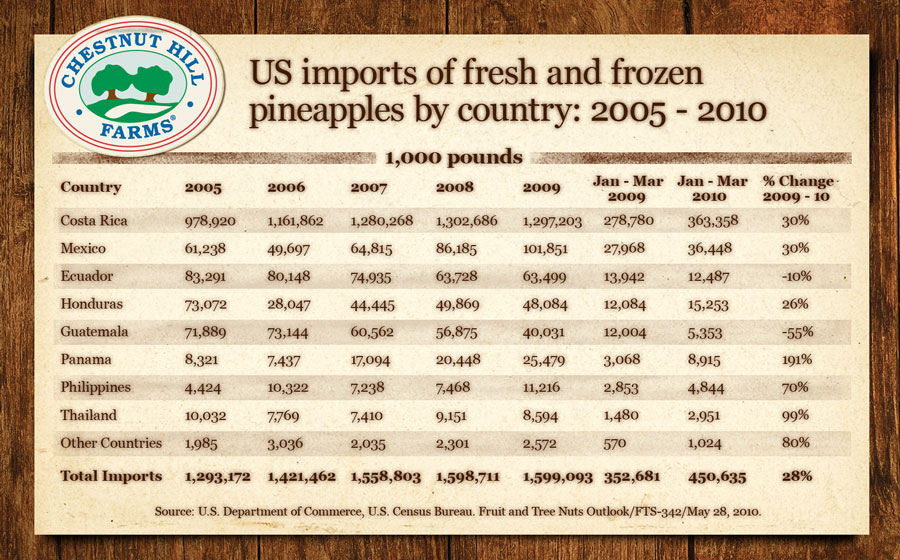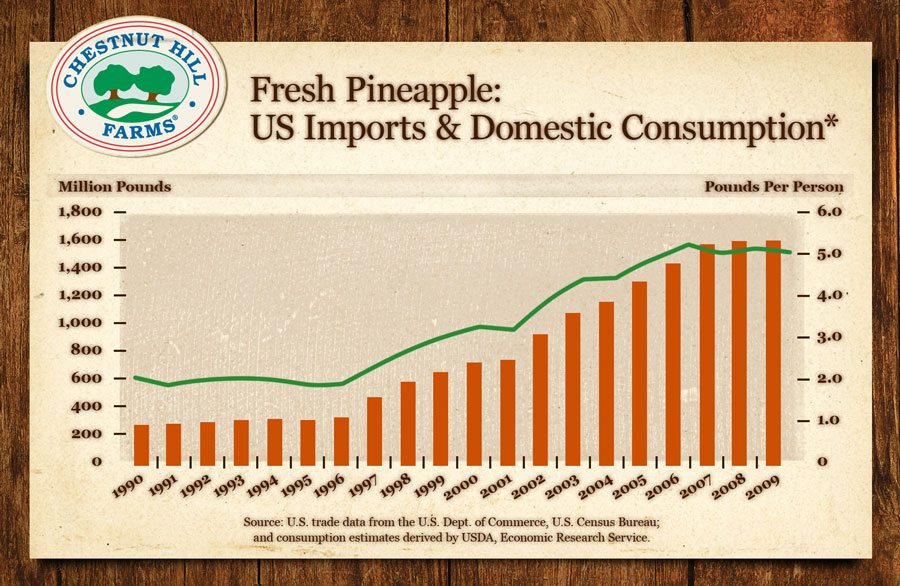-
Featured Posts
- St. Patrick’s Day Pineapple Punch
- Sheet Pan Perfect Pineapple Ham
- Can A Pineapple Really Live Under the Sea?
- Say Aloha to Our Hawaiian-style Ham and Pineapple Pasta Recipe
- Holiday Joy, Hanukkah, and Pineapple Kugel
- What are China’s Pineapple Science Awards?
- Fuel Up with Paleo Pineapple Fried Rice
- Best Gluten-Free Pineapple Upside Down Cake
- Piña Colada Pie in a Jar
- Slow Cooking Your Pineapple This Fall
Author Archives: admin
Health Benefits of Eating Pineapples
Perhaps most people eat pineapple because it is truly a fantastic tropical experience of satisfaction resulting from the juicy balance of sweet and acidic tastes without realizing the many health benefits of eating this fine fruit that is available the entire year.
Vitamin C
The health benefits are relatively numerous. The variety MD2 which represents the majority of pineapple now commercially available in the market is high in Vitamin C. This vitamin is the body’s primary water-soluble antioxidant defending the aqueous areas of the body against free radicals that attack and damage normal cells. These free radicals promote the artery plaque build-up of atherosclerosis and diabetic heart disease, cause the airway spasm that leads to asthma attacks, damage the cells of the colon so they become colon cancer cells and contribute to the joint pain and disability seen in osteoarthritis and rheumatoid arthritis. Diets rich in vitamin C have been shown to be useful for preventing or reducing the severity of all of these conditions. In addition, vitamin C is vital for the proper function of the immune system, making it a nutrient to turn to for the prevention of recurrent ear infections, colds and flu. Because of the Vitamin C content, eating pineapple or drinking the juice has the same benefits as drinking orange juice.
Manganese
Pineapple is also an excellent source of manganese, which is an essential cofactor in a number of enzymes important in energy production and antioxidant defenses. One cup of pineapple supplies more than 100% of the DV for this very important trace mineral.
Another of the benefits of Manganese is that it helps to build healthy bones and connective tissues. The benefits of pineapple can effect the growth of bones in young people and the strengthening of bones in older people.
Thiamin
Pineapple is also a good source of thiamin. Thiamin is a B vitamin that acts as a cofactor in the enzymatic reactions central to energy production. In other words Thiamin will boost your metabolism helping your body convert carbohydrates into energy.
Sight degeneration
Our Mothers always said, eat your carrots if you want to keep your eyes bright. It turns out that 3 portions of fruit daily like pineapple may lower your risk of age-related macular degeneration which is the primary cause of vision loss in older adults. Pineapples contain a lot of beta-carotene that is good for the eyes and vision. Three portions of fruit may sound like a lot, but just try putting pineapple in your cold slaw, carrot salad, yogurt, or just make a smoothie. Remember, that the new USDA recommendations are that one half of your plate should be fruits and vegetable.
Bromelain
Bromelain is a group of protein digesting enzymes. Originally it was thought that this group of enzymes was basically limited to help with the digestion in the intestinal tract. For example, it is reported that eating one slice of pineapple after each meal will reduce gas, bloating, nausea, constipation and the symptoms of irritable bowel syndrome. More recent studies have shown that bromelain has a wide variety of health benefits which are probably not related to these enzymes. Excessive inflammation, excessive coagulation of the blood and certain types of tumor growth may all be reduced by therapeutic doses of bromelain when taken as a dietary supplement.
Regular ingestion of ½ cup of fresh pineapple daily is purported to relieve painful joints common to osteoarthritis due to the anti-inflammatory activity of bromelain
Bromelain has been shown helpful for upper respiratory tract infections such as Sinusitis and Bronchitis. It helps to reduce nasal inflammation and break up the mucus in the nasal, sinus, and respiratory area.
Bromelain has also been shown to reduce the risk of blood clots thereby preventing heart problems.
Marinating meat with pineapple juice acts as a tenderizer. By the same form, it will aid in digestion of meats if taken after eating. In addition, pineapple is high in fiber important for healthy digestion. Fiber has also been shown to lower blood cholesterol, control blood sugar.
To Healthy Living,
Dr. Lloyd
Posted in Latest News, Tips & Tall Tales
Dehydrate Your Own Pineapples!

Here is how to dry your own pineapple at home from a fresh one:
– Wash the fruit and cut it into thin slices.
– Lay it on a parchment covered cooking sheet making sure that fruit slices do not touch each other and then place the tray of fruit in the oven.
– Turn the oven on very low setting (150-200 degrees F / 50 degrees C) because we only want to dry the fruit, not to cook it.
– The drying process will take several hours so do not try to increase the heat to speed up the drying process.
– Remove from the oven when fruit is sufficiently dehydrated. Fruit should be chewy, not crunchy or squishy.
– Other method is to put the slices of pineapple in a dehydrator on medium setting for 24 to 36 hours.
Enjoy it!
Dr. Lloyd
Posted in Featured, Recipes, Tips & Tall Tales
Sustainability Practices
We don’t often toot our own horn, but it sure is nice to have someone else toot it once in a while. Here’s a nod from the PMA’s Field To Fork blog regarding our sustainability practices. Thank you kindly Lee Mannering for noticing.
Posted in Featured, Latest News
Calorie Confusion Remains
Only nine percent of Americans can accurately estimate the number of calories they should consume in a day for a person of their age, height, weight, and physical activity. Additionally, almost half of Americans are unable to provide an estimate of how many calories they burn in a day (60 percent offer inaccurate estimates). Furthermore, the majority of Americans do not keep track of calories consumed or burned, citing numerous barriers, including extreme difficulty and a lack of interest, knowledge, and focus.
Americans are More Receptive to Positive Food Messages: Despite the popularity of some “food rules” which suggest certain foods to avoid, Americans more and more say they would rather hear what to eat (63 percent) instead of what not to eat. The interest in positive messaging rose seven percent since 2009 when the Survey last polled Americans on this sentiment.
Source: International Food Information Council Foundation 2011 Food & Health Survey
So in attempt to kill two birds with one stone (figuratively of course!) here’s a “novel” idea: Reduce Calories by Eating More Fruits & Veggies!
And and if you’re really feeling it, you can even take the pledge here!
Posted in Featured, Tips & Tall Tales
Emerging Trends

We’ve been called a lot of things in our day, but “trendy” sure ain’t one of ‘em. Nevertheless, we thought you might find this list of “Emerging Trends and Operators Poised to Expand their Impact on Food Retailing” interesting, and hopefully useful.
Enjoy: The Hot List
Posted in Latest News
Fresh Facts About Cantaloupe

For consumers 59 and up, the time to sell cantaloupe is ripe! According to this year’s Fresh Trends, the likelihood of a cantaloupe purchase increased according to age and income (which was the same last year). The consumers most likely to buy were age 59 and older.
Cantaloupe was one of the few commodities studied that showed consumers without children at home were more likely to make a purchase than those with kids. The likelihood of purchase amongst shoppers with kids increased according to the number of children.
Married consumers were 43% more likely to buy cantaloupe than single shoppers – the group least likely to buy overall. Western shoppers were more likely to buy the orange–fleshed melon than those in other regions, as was the case last year.
Consumers prefer conventionally grown cantaloupe. In fact, the melon was the number 1 commodity that shoppers bought as conventionally grown. Ten percent of cantaloupe shoppers said they purchased organic product at least some of the time, while 3% said they always bought organic. Single shoppers and those age 23-39 were most likely to buy organic cantaloupe exclusively.
Source: Fresh Trends 2011 – thepacker.com
Posted in Latest News, Tips & Tall Tales
Pineapple Market Growth 2005-2010
(click charts to enlarge)
According to the United States Department of Agriculture (USDA), total imports of pineapple and pineapple products (fresh, canned, juice) into the United States were up 12% in volume during the first quarter of 2010 from imports during the first quarter in 2009. The growth in imports during the first 3 months was attributed to a 28% increase in pineapples coming into the United States for the fresh market. Imports of canned pineapples and pineapple juice were down 12% and 24% respectively.
Fresh pineapple imports have been up significantly from the United States’ top two suppliers – Costa Rica and Mexico. Sharply larger shipments have also been coming in from other leading suppliers such as Panama, the Philippines, and Thailand, and moderately higher quantities from Honduras, last year’s fourth largest supplier of fresh pineapples to the United States.
Approximately 80% of all fresh pineapples imported into the United States are from Costa Rica.
Domestic demand for fresh pineapples has been trending up over the past two decades and imports have made it all possible for meeting the growth in this market. Last year, domestic fresh-pineapple demand remained relatively unchanged from the past two years despite economic recession, with per capita consumption estimated at 5 pounds per person. The higher supply over the first few months of 2010 have driven down pineapple prices at the retail level. USDA data from January – April of 2010 show that pineapple prices were averaging 4 % lower than 2009 and down an average of 9% from the average prices in January through April 2009.
Costa Rican supplies in the U.S. Market in April (2010) while higher than earlier in the year, have fallen below levels of the same time in 2009. Consumers were paying less per pineapple than they did in 2009. The average pineapple retail price in April of 2008 was $2.95 each, down from the $3.20 average in April 2009 and while retail prices have strengthened in early May of 2010, prices are averaging about $ .19 cheaper per pineapple.
Source: Fruit and Tree Nuts Outlook / FTS – 342 / May 28, 2010 … Economics Research Service, USDA – U.S. Department of Commerce. U.S. Census
Posted in Latest News
Some Thoughts on Customer Service
A customer service experience can change the entire perception one has of your organization. And no matter what your job title says, you’re in the customer service business.
Bob Dylan said it best:
“You may be an ambassador to England or France
You may like to gamble, you might like to dance
You may be the heavyweight champion of the world
You may be a socialite with a long string of pearls
But you’re gonna have to serve somebody, yes indeed
You’re gonna have to serve somebody
So whether you’re selling directly to the customer or selling to the boss, we think you’d enjoy “Nine Steps Towards Handling Customer Complaints”
Posted in Tips & Tall Tales
The Cost of Eating Well
The PMA research released last October shows that average Americans can get 4.5 cups of fresh fruits and vegetables (nine servings) for $2.18, and bargain hunters can get it for 88 cents. Fresh produce is the best “value meal” in many senses of the term.
And recently the USDA released its own research on getting 4.5 cups of fruits and vegetables in a report: “How Much Do Fruits and Vegetables Cost?”
Read more…
And you can learn more about Fruits & Veggies-More Matters and the America’s More Matters Pledge at www.FruitsAndVeggiesMoreMatters.org.
For more information on the USDA’s Economic Research Service’s study, How Much Do Fruits and Vegetables Cost, click here.
For more information on PMA’s study, The Cost of the Recommended Daily Servings of Fresh Produce, click here.
For more information on the U.S. Bureau of Labor Statistics’ Consumer Expenditures Survey, click here.
Posted in Latest News
New Dietary Guidelines Recommend Filling Half Your Plate with Fruits and Vegetables
Source: Produce For Better Health Foundation.
As you probably already know, The U.S. Department of Agriculture (USDA) and the Department of Health and Human Services (HHS) have released the new 2010 Dietary Guidelines for Americans with no changes to the recommended fruit and vegetable servings per day. The new guidelines do, however, stress the move to a more plant based diet, specifically instructing Americans to fill half their plates with fruits and vegetables. They also emphasize limiting added sugars and solid fats in the diet and slash the maximum recommendation for sodium from less than 2,300 mg to 1,500 mg per day.
Read More…
And here’s some more info you might find interesting:
State of the Plate – 2010 Study on America’s Consumption of Fruits & Vegetables.
As you probably already know, The U.S. Department of Agriculture (USDA) and the Department of Health and Human Services (HHS) have released the new 2010 Dietary Guidelines for Americans with no changes to the recommended fruit and vegetable servings per day. The new guidelines do, however, stress the move to a more plant based diet, specifically instructing Americans to fill half their plates with fruits and vegetables. They also emphasize limiting added sugars and solid fats in the diet and slash the maximum recommendation for sodium from less than 2,300 mg to 1,500 mg per day.
Read More…
And here’s some more info you might find interesting:
State of the Plate – 2010 Study on America’s Consumption of Fruits & Vegetables.
Posted in Latest News






